Sustainable funds are recovering part of their 2022 underperformance. Yet ESG ratings providers have also come under scrutiny over the past several months by regulators globally over the transparency and consistency of their ratings.
- How have sustainable funds flows been impacted by such environment so far in 2023?
- Do investors favour sustainable index or non-index fund?
- Are there some differences in flows between asset classes?
- Is the structural rotation of portfolios toward green investments put in question?
Have flows toward ESG funds been impacted by ESG indices performances?
Europe sustainable funds dominate the flows so far in 2023.
Sustainable fund flows have continued to dominate the flows in 2023, reaching €55bn, i.e. 57% of total flows in a global context of overall flow rebound. This may be explained by improving performances of sustainable indices in all areas with the US leading the way, Europe not far, and Emerging markets on their way to recovery, as detailed above.
Yet the overall trend toward sustainable fund flows is decelerating with major differences between asset classes. 2023 sustainable fund flows represent less than 44% of 2022 flows in more than half of the year.
Annual flows to all index and non-index funds in Europe
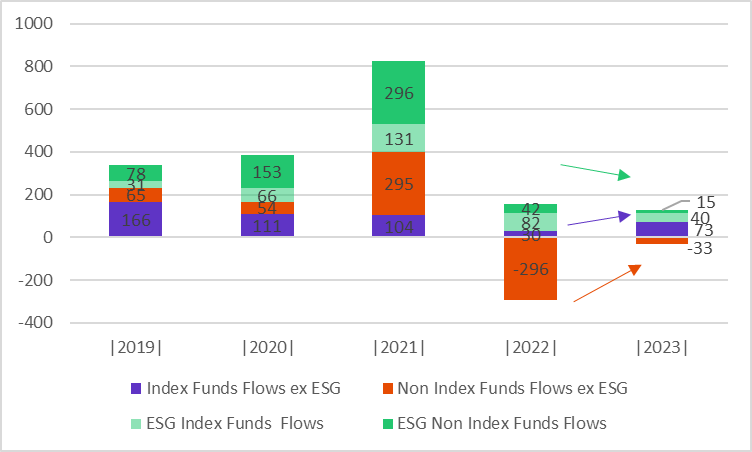
Do investors favour index or non-index fund for sustainable investments?
Index funds have become the preferred vehicle for sustainable investments so far in 2023.
Index funds have become the preferred vehicle for sustainable investments so far in 2023.
•In 2023 (see graph below), index funds gathered most sustainable fund flows. The shift occurred in 2022 and is confirmed in 2023 while previously non index funds flows were preferred for sustainable investments.
•This holds true for both equity and fixed income index funds. This may be explained by the investors’ appetite for custom ESG indices to meet their investment principles or by the interest toward PAB benchmarks.
% of index and non-index fund in ESG funds flows in Europe
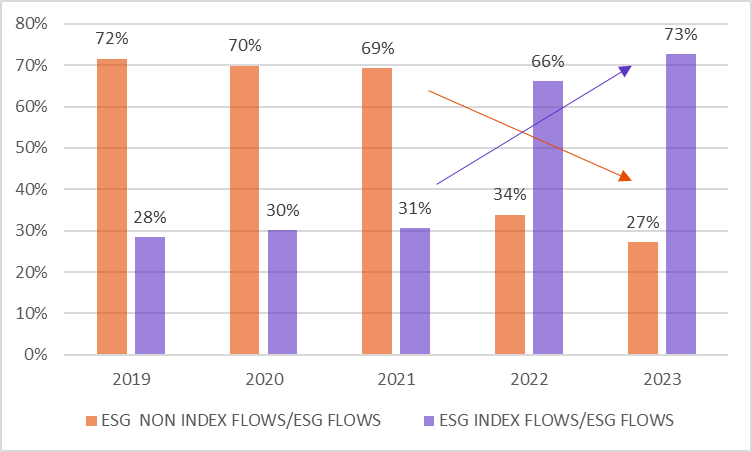
What share of index funds flows does sustainable funds represents?
Sustainable index fund flows represent no more than a third of total index funds flows
• Year to date in 2023, flows to non-sustainable index funds exceed those to sustainable funds, up 2.5x vs 2022 level. After four years of uninterrupted growth, the share of ESG index funds decreased significantly in 2023, reaching 35% of flows into index funds.
• This may be an indication that in current volatile and uncertain environment, investors use index funds as a tactical tool.
Sustainable & Non sustainable index funds flows in Europe
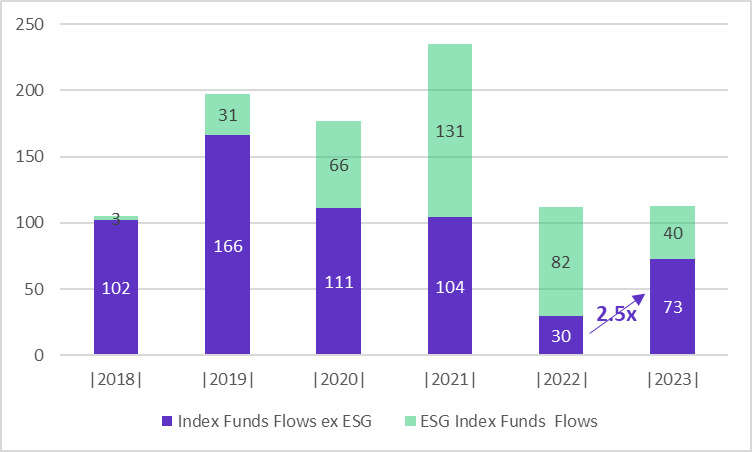
Are there some differences in flows between asset classes?
In Equity, sustainable fund flows stand out
Despite a strong rebound, flows toward equity non index funds continue to be negative of €30bn. Yet flows toward ESG equity non index flows are positive of €8bn.
Equity sustainable fund flows mainly concern index funds
Equity sustainable index funds gathered 79% of all inflows toward equity European domiciled sustainable funds, year to date inflows towards index funds on Paris Aligned Benchmark represent 24% of total equity sustainable index funds flows.
In fixed income, the share of sustainable funds flows decreased
ESG funds flows gathered €23bn so far in 2023, less than 20% of total flows. This is the lowest level in total flows since 2020.
The share of sustainable index fund flows in total fixed income index fund flows decreased from 46% in 2022 to 15% in 2023. The decision of S&P to remove ESG Indicators from Credit Rating Reports and questioning on ESG credit risk rating by regulators may explain part of the decrease.
Fixed income non-index fund flows exceed those of indexed funds
ESG non index funds flows were higher than those towards index funds, opposite to what happen in the equity space: €14bn vs €9bn. Investors favoured non index funds in a less changing interest rate environment as opposed to 2022 where a more tactical positioning through index funds was favoured by investors.
Yearly sustainable index vs non-index fund flows
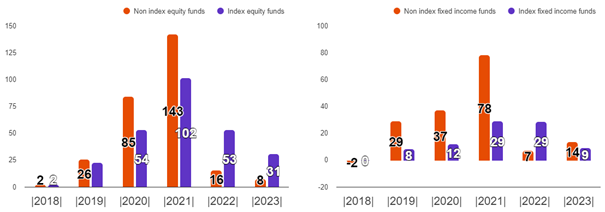
Conclusion
So far in 2023, sustainable funds dominate the flows confirming the continuation of the structural rotation of portfolios toward sustainable investments. Yet the trend is slowing despite the improvement of sustainable fund performances as the regulatory environment could become more demanding for ESG ratings providers.
In the Equity space, sustainable fund flows stand out and are mainly dedicated toward index funds which have become the preferred vehicle for equity sustainable investments so far in 2023. With the recent revival of sustainable equity funds outperformance, investors using sustainable index funds for more tactical purposes (to benefit from an outperformance for example) reappeared in the market in the second half of 2023. Thus, explaining the dominance of index funds in this area.
In the fixed income space, the share of sustainable funds in total flows reached a low point, and non-index fund flows exceeded those of index funds so far in 2023. Index funds flows were certainly impacted by questioning on ESG credit risk rating by regulators. This can be added to the fact that Investors favored non index funds in a less changing interest rate environment as opposed to 2022 where a more tactical positioning through index funds was favored by investors.
Marlene Hassine Konqui



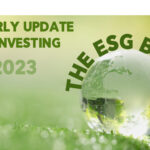
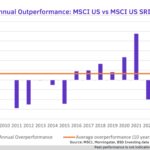





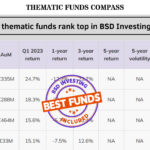

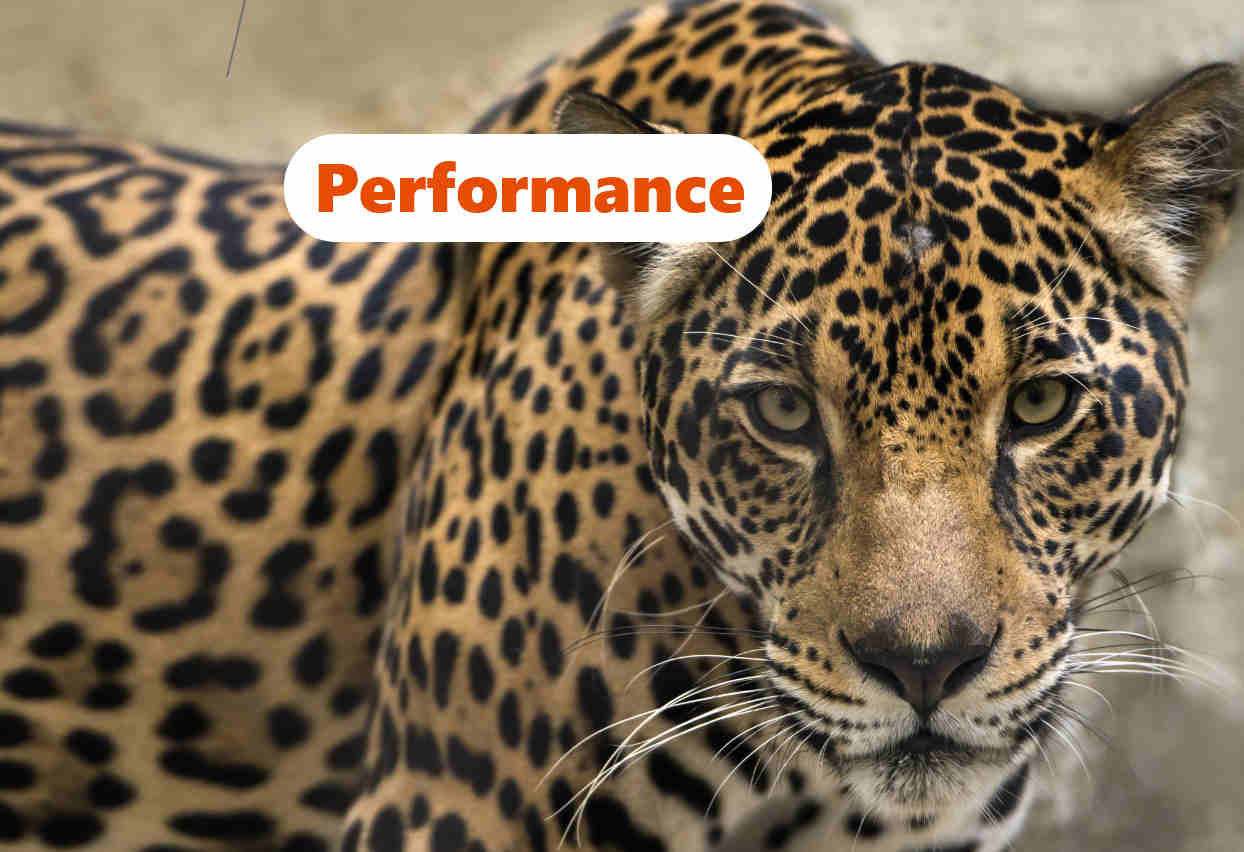
Leave a Reply
You must be logged in to post a comment.